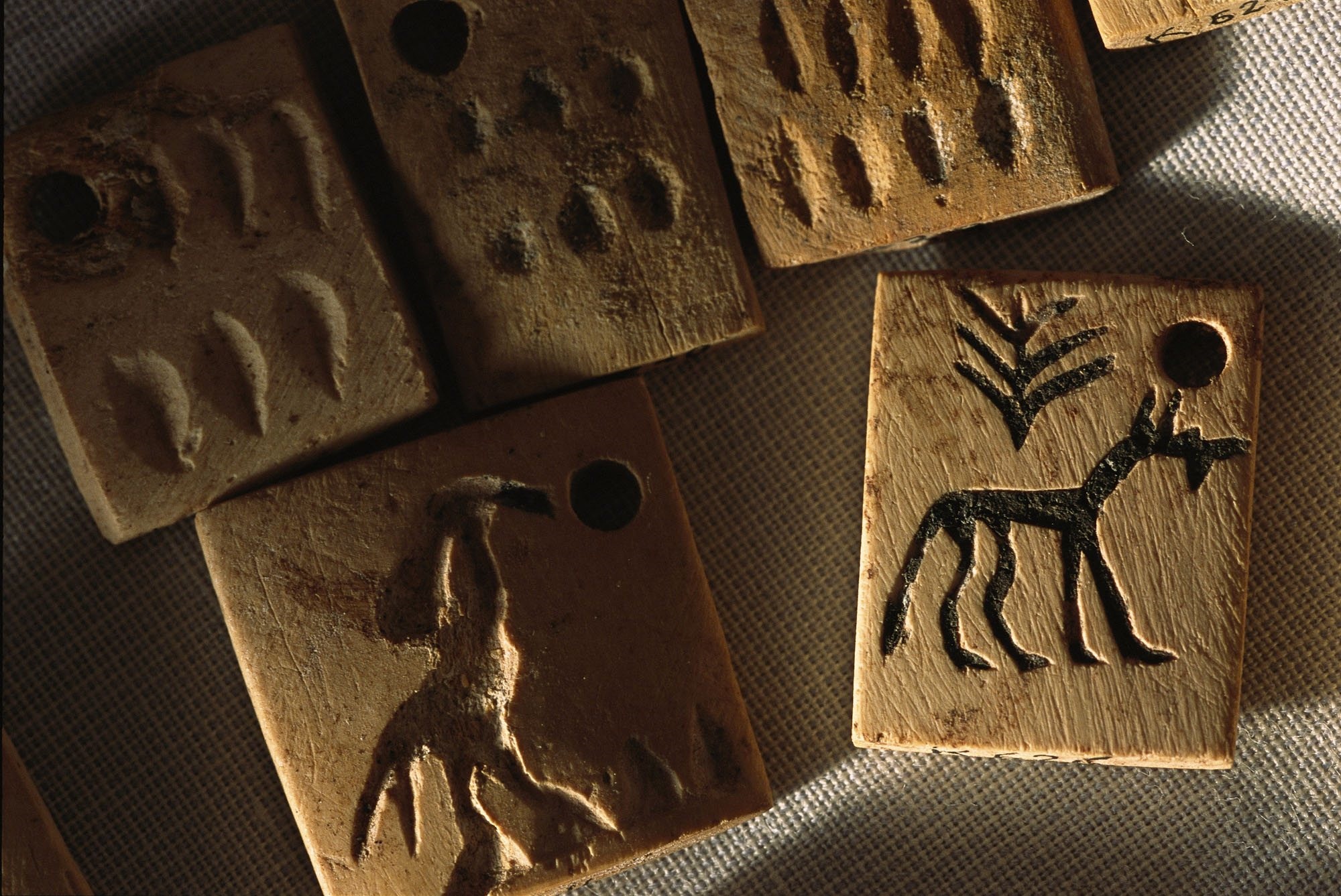“were glad to have seen the land which was the mother of civilization – which taught Greece her letters, and through Greece Rome, and through Rome the world.”
This is among ancient Egypt’s earliest writing, carved into ivory and bone tags around 3,200 B.C. It marks the beginning of Egypt’s, and therefore the world's, written history.
These tags were discovered in the 1980s in the Abydos tomb (U-j) of the predynastic ruler Scorpion I by Günter Dreyer of the German Archaeological Institute. Abydos, in Upper Egypt, was where the country's earliest rulers chose to be buried. Also among the Abydos tombs were clay seal impressions that date back even further, to 3400 B.C.
The tags were made to label the grave goods that the rulers took with them into the afterlife. They document the quantity and origin of particular commodities such as wine, grain and fabrics. Having the goods labelled meant that even if they physically were lost, their essence would remain to supply the king forever.
This was also about status. The place names spoke of the reach of the power of the king to command these resources from towns throughout Egypt, even in the Nile Delta.
For a long time it was thought that writing developed in Mesopotamia as there was a clear evolutionary path to follow, from the first marks in clay to keep track of trade goods, through to a fully-fledged writing system. Egyptian hieroglyphs on the other hand, seem to suddenly appear! However the Abydos find turned things upside down, as they are oldest form of writing found anywhere, by a few hundred years.
In time the pragmatic uses of writing gave way to the noble art of love expressed through poetry. This poem was written around 1,550 B.C.:
“Her legs parade her beauty;
With graceful step she treads the ground,
Captures my heart by her movements.
She causes all men’s necks
To turn about to see her;
Joy has he whom she embraces,
He is like the first of men!”
However, when the royal scribes made those first clay seals in Abydos, such written romantic flourishes were nearly two thousand years into the future. Egypt’s earliest surviving examples of writing seem to be driven by a much simpler need: to keep track of stuff.
Photo: Kenneth Garrett
